INSTITUT SUPERIEUR D'ANTHROPOLOGIE
INSTITUTE OF ANTHROPOLOGY
ONLINE COURSES / COURS A DISTANCE
SPRING TERM : APRIL 2015
REGISTER NOW
ESPAGNE – 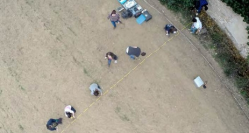 Vilar deVals - Spanish archaeology students have discovered a 2,200-year-old moat in what is now the Catalan town of Valls, filled with objects providing evidence of the presence of troops of the Carthaginian general Hannibal in the area. The moat, which surrounded the Iberian town of Vilar de Vals, contained coins and lead projectiles, researchers said in a statement. It is estimated the moat could have had a width of 40 metres (131 feet), a depth of five metres, and a length of nearly half a kilometre. The huge dimensions of the trench surprised the directors of the investigation, Jaume Noguera from the Prehistory department at the University of Barcelona, and Jordi López, from the Catalan Institute of Classic Archeology, according to Catalan newspaper, La Vanguardia. Noguera and López said the site may have been destroyed by the Romans during the Second Punic War (218-202 BC) that pitted Rome against Carthage for the hegemony of the Mediterranean. Hannibal, one of the most famous military commanders in history, crossed the Pyrenees with his soldiers and elephants, traversing the Iberian Peninsula, before reaching present-day Italy in 218 BC. He left around 11,000 men in Spain to protect his interests in the north of Iberia and to guarantee a regular source of food and weapons to his troops. But Roman legionnaires, led by general Gnaeus Cornelius Scipio Calvus, defeated Hannibal’s men in Iberia. After the battle, the Romans raided a nearby Carthaginian camp, located on the edge of a town, and destroyed everything. The camp and town were located in modern-day Valls in Catalonia, where the group of archaeology students from the University of Barcelona made the discovery. They tested the age of the moat using electrical resistivity tomography, a technique that involves analyzing sub-surface structures from electrical resistivity measurements made at the surface. The students’ fieldwork is part of an attempt to reconstruct the route taken by Carthaginian troops through north-eastern Spain and their confrontation with Rome.
Vilar deVals - Spanish archaeology students have discovered a 2,200-year-old moat in what is now the Catalan town of Valls, filled with objects providing evidence of the presence of troops of the Carthaginian general Hannibal in the area. The moat, which surrounded the Iberian town of Vilar de Vals, contained coins and lead projectiles, researchers said in a statement. It is estimated the moat could have had a width of 40 metres (131 feet), a depth of five metres, and a length of nearly half a kilometre. The huge dimensions of the trench surprised the directors of the investigation, Jaume Noguera from the Prehistory department at the University of Barcelona, and Jordi López, from the Catalan Institute of Classic Archeology, according to Catalan newspaper, La Vanguardia. Noguera and López said the site may have been destroyed by the Romans during the Second Punic War (218-202 BC) that pitted Rome against Carthage for the hegemony of the Mediterranean. Hannibal, one of the most famous military commanders in history, crossed the Pyrenees with his soldiers and elephants, traversing the Iberian Peninsula, before reaching present-day Italy in 218 BC. He left around 11,000 men in Spain to protect his interests in the north of Iberia and to guarantee a regular source of food and weapons to his troops. But Roman legionnaires, led by general Gnaeus Cornelius Scipio Calvus, defeated Hannibal’s men in Iberia. After the battle, the Romans raided a nearby Carthaginian camp, located on the edge of a town, and destroyed everything. The camp and town were located in modern-day Valls in Catalonia, where the group of archaeology students from the University of Barcelona made the discovery. They tested the age of the moat using electrical resistivity tomography, a technique that involves analyzing sub-surface structures from electrical resistivity measurements made at the surface. The students’ fieldwork is part of an attempt to reconstruct the route taken by Carthaginian troops through north-eastern Spain and their confrontation with Rome.
http://www.thelocal.es/20150128/evidence-of-hannibals-troops-found-in-catalonia
INDE – 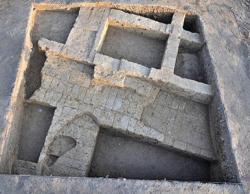 Binjor / Rakhigarhi - Excavations have begun at the two Harappan sites of Binjor in Rajasthan, close to the India-Pakistan border, and Rakhigarhi in Haryana. While the Archaeological Survey of India’s Excavation Branch at Purana Quila, New Delhi, is excavating Binjor, the Deccan College Post-Graduate & Research Institute, Pune, and the Haryana Department of Archaeology is excavating the Rakhigarhi site, 25 km from Jind. About 350 km separate Binjor from Rakhigarhi. As the crow flies, Binjor is situated seven km from the border, in Anupgarh tehsil of Sri Ganganganar district. There are about 2,000 Harappan sites in India, Pakistan and Afghanistan, with 500 in India and 1,500 in Pakistan. At its glory, the Harappan civilisation flourished over two million square km, from Sutkajendor on the Makran coast of Balochistan to Alamgirpur in Uttar Pradesh, and from Manda in Jammu to Daimabad in Ahmednagar district of Maharashtra. Sanjay Manjul, Director, Institute of Archaeology, New Delhi, who is director of the excavation at Binjor, said the excavation was being jointly done by the ASI’s Excavation Branch at Purana Quila and the Institute of Archaeology. Vasant Shinde, Vice-Chancellor, Deccan College, is the director of the excavation at Rakhigarhi. Professor Shinde said that with the discovery of two more mounds last year at Rakhigarhi, the site had staked claim to be the largest Harappan site. One of the two newly discovered mounds would be dug this season.
Binjor / Rakhigarhi - Excavations have begun at the two Harappan sites of Binjor in Rajasthan, close to the India-Pakistan border, and Rakhigarhi in Haryana. While the Archaeological Survey of India’s Excavation Branch at Purana Quila, New Delhi, is excavating Binjor, the Deccan College Post-Graduate & Research Institute, Pune, and the Haryana Department of Archaeology is excavating the Rakhigarhi site, 25 km from Jind. About 350 km separate Binjor from Rakhigarhi. As the crow flies, Binjor is situated seven km from the border, in Anupgarh tehsil of Sri Ganganganar district. There are about 2,000 Harappan sites in India, Pakistan and Afghanistan, with 500 in India and 1,500 in Pakistan. At its glory, the Harappan civilisation flourished over two million square km, from Sutkajendor on the Makran coast of Balochistan to Alamgirpur in Uttar Pradesh, and from Manda in Jammu to Daimabad in Ahmednagar district of Maharashtra. Sanjay Manjul, Director, Institute of Archaeology, New Delhi, who is director of the excavation at Binjor, said the excavation was being jointly done by the ASI’s Excavation Branch at Purana Quila and the Institute of Archaeology. Vasant Shinde, Vice-Chancellor, Deccan College, is the director of the excavation at Rakhigarhi. Professor Shinde said that with the discovery of two more mounds last year at Rakhigarhi, the site had staked claim to be the largest Harappan site. One of the two newly discovered mounds would be dug this season.
http://www.thehindu.com/news/national/two-harappan-sites-being-excavated/article6827796.ece
CHYPRE – 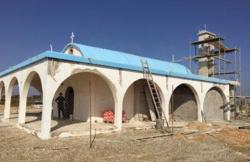 Ayia Thekla church - A ancient column capital has been discovered buried next to Ayia Thekla church on the eastern coast. The stone artifact, which once formed the topmost member of a column (or a pilaster) was discovered by workmen west of the church which is currently undergoing a complete restoration. Priest Georgios Ioannou said that as soon as the column capital was uncovered, the officer responsible for the excavations at the Antiquities Department was notified and verified the importance of the cultural heritage in this area. The column capital will be examined by Antiquities Department officials. Plans are now in place for the excavations around the church to discover any other archaeological artifacts.
Ayia Thekla church - A ancient column capital has been discovered buried next to Ayia Thekla church on the eastern coast. The stone artifact, which once formed the topmost member of a column (or a pilaster) was discovered by workmen west of the church which is currently undergoing a complete restoration. Priest Georgios Ioannou said that as soon as the column capital was uncovered, the officer responsible for the excavations at the Antiquities Department was notified and verified the importance of the cultural heritage in this area. The column capital will be examined by Antiquities Department officials. Plans are now in place for the excavations around the church to discover any other archaeological artifacts.
VIDEO = https://www.youtube.com/watch?v=nLvl4lDtFfQ
http://famagusta-gazette.com/ancient-column-capital-dug-up-at-ayia-thekla-church-p27403-69.htm
KAZAKHSTAN – 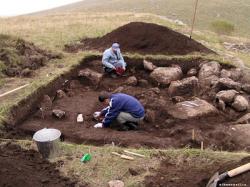 Shymkent - The new claim was earlier made public by the scientists of Kazakhstan at the international conference titled “2,200 Years of the History of Shymkent,” held in October 2014. Scientists from France, Canada, Belgium, England, Russia, Uzbekistan and Azerbaijan, as well as representatives of UNESCO attended the conference. The participants were presented the results of excavations, which appeared to prove that the city has an ancient history. It was reported from the conference that foreign participants confirmed the validity of their Kazakh colleagues’ evaluations. “There are ceramics, burials, vessels, gold, which are more than two thousand years old, no doubt. Archaeologists have done a great job, and I agree that Shymkent is 2,200 years old,” French professor of history Lyonnet Bertille said at that conference, according to Liter newspaper. If the application is approved, Shymkent will be recognised as Kazakhstan’s oldest city. There have been lengthy debates in the scientific community about the real age of Shymkent. Until recently, it was popularly believed that the city can trace its history back to the 11th-12th centuries AD.
Shymkent - The new claim was earlier made public by the scientists of Kazakhstan at the international conference titled “2,200 Years of the History of Shymkent,” held in October 2014. Scientists from France, Canada, Belgium, England, Russia, Uzbekistan and Azerbaijan, as well as representatives of UNESCO attended the conference. The participants were presented the results of excavations, which appeared to prove that the city has an ancient history. It was reported from the conference that foreign participants confirmed the validity of their Kazakh colleagues’ evaluations. “There are ceramics, burials, vessels, gold, which are more than two thousand years old, no doubt. Archaeologists have done a great job, and I agree that Shymkent is 2,200 years old,” French professor of history Lyonnet Bertille said at that conference, according to Liter newspaper. If the application is approved, Shymkent will be recognised as Kazakhstan’s oldest city. There have been lengthy debates in the scientific community about the real age of Shymkent. Until recently, it was popularly believed that the city can trace its history back to the 11th-12th centuries AD.
http://www.astanatimes.com/2015/01/shymkent-seeks-unesco-recognition-2200-year-old-city/
USA – Arkansas - A community of Wichita tribe ancestors who settled between the two rivers that converge southeast of Arkansas City is one of the two largest prehistoric settlements of Native Americans in the United States, a Wichita State University archaeologist said. With an estimated population of 20,000 people and an area that is more than 5 miles long, the Ark City settlement now is thought to have been the largest or second-largest Native American settlement, with the other large one in the St. Louis area, said WSU professor Don Blakeslee. Blakeslee outlined plans for a large-scale exploration of the Ark City area, and other sites in Rice and McPherson counties, where ancestors of the Wichita settled. He said he plans to lead the digs in late May and early June. Recent evidence has shown that the areas of Kansas settled by the ancestors of the Wichita were more extensive than previous archaeologists thought, Blakeslee said. The evidence includes a new translation of a 1602 document detailing an expedition by Spanish explorers to this area during the previous year, and a map made of the expedition. The map and descriptions by men who were on the expedition reveal that there was a large Native American settlement around what now is Ark City.
http://www.arkcity.net/news/local_news/plans-for-large-scale-exploration-outlined/article_b53203a0-a5e3-11e4-8e83-337e4624fb25.html
USA – 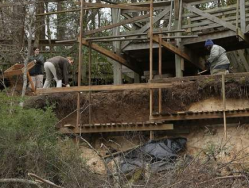 Moundville - An archaeological team with the University of Alabama is working to save artifacts from an eroding stretch of the Black Warrior River’s bank on the north side of Moundville Archaeological Park. Only about 15 percent of the massive Moundville complex has been excavated. The section threatened by the river is among the least explored, according to Davis. The site overlooking the river was likely one of the first and last places to be occupied at the complex, which was inhabited from roughly the 11th to 16th centuries by Native Americans of the Mississippian culture. The site was a religious and commercial center, home to both elite and commoners of the culture. Based on materials found in the trash pit, experts say the sites near the river were likely the residential areas for the elite members of the society. The items include such things as shards of elaborate ceramics and mineral pigments from the Midwest, Davis said. The trash pits offer glimpses of daily life at the sprawling complex, once the second largest of its kind in what is now the United States.
Moundville - An archaeological team with the University of Alabama is working to save artifacts from an eroding stretch of the Black Warrior River’s bank on the north side of Moundville Archaeological Park. Only about 15 percent of the massive Moundville complex has been excavated. The section threatened by the river is among the least explored, according to Davis. The site overlooking the river was likely one of the first and last places to be occupied at the complex, which was inhabited from roughly the 11th to 16th centuries by Native Americans of the Mississippian culture. The site was a religious and commercial center, home to both elite and commoners of the culture. Based on materials found in the trash pit, experts say the sites near the river were likely the residential areas for the elite members of the society. The items include such things as shards of elaborate ceramics and mineral pigments from the Midwest, Davis said. The trash pits offer glimpses of daily life at the sprawling complex, once the second largest of its kind in what is now the United States.
http://www.tuscaloosanews.com/article/20150126/NEWS/150129619/1007/NEWS02?p=1&tc=pg
TUNISIE – 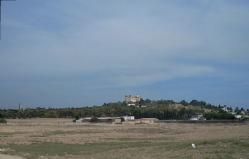 Carthage - Last week a new cooperation agreement was signed between the German Archaeological Institute of Rome and the Tunisian Institut National du Patrimoine in the Musée du Bardo in Tunisia, launching a new phase of the 40-year-old cooperation between the DAI and the INP enters a new phase. Since the 1960s, the Rome branch of the German Archaeological Institute is involved in archaeological research projects in Tunisia and actions regarding the cultural preservation of the country’s archaeological sites. The institute conducts excavations in Chimtou, the town of the quarries of antique yellow marble, and Carthage, one of the most significant metropolises of the ancient Mediterranean. DAI’s surveys in Carthage have contributed substantially to the inclusion of Carthage in the UNESCO World Heritage List in 1979. The new excavation project will focus on the Circus of Carthage, the biggest chariot-racing arena of the Roman Empire after the Circus Maximus in Rome. As stated in the DAI press release this is the last chance to conduct an extended topographic study with a diachronic approach in the surrounding area of the Circus, which was built within the city walls. The international research team, headed by Dr. Hamden Ben Romdhane (INP Tunis) and Dr. Ralf Bockmann (DAI Rome), hopes that the project will bring new insights into the city’s development beginning from the Punic Era, through the Roman and Byzantine period, until the early Islamic period.
Carthage - Last week a new cooperation agreement was signed between the German Archaeological Institute of Rome and the Tunisian Institut National du Patrimoine in the Musée du Bardo in Tunisia, launching a new phase of the 40-year-old cooperation between the DAI and the INP enters a new phase. Since the 1960s, the Rome branch of the German Archaeological Institute is involved in archaeological research projects in Tunisia and actions regarding the cultural preservation of the country’s archaeological sites. The institute conducts excavations in Chimtou, the town of the quarries of antique yellow marble, and Carthage, one of the most significant metropolises of the ancient Mediterranean. DAI’s surveys in Carthage have contributed substantially to the inclusion of Carthage in the UNESCO World Heritage List in 1979. The new excavation project will focus on the Circus of Carthage, the biggest chariot-racing arena of the Roman Empire after the Circus Maximus in Rome. As stated in the DAI press release this is the last chance to conduct an extended topographic study with a diachronic approach in the surrounding area of the Circus, which was built within the city walls. The international research team, headed by Dr. Hamden Ben Romdhane (INP Tunis) and Dr. Ralf Bockmann (DAI Rome), hopes that the project will bring new insights into the city’s development beginning from the Punic Era, through the Roman and Byzantine period, until the early Islamic period.
http://www.archaeology.wiki/blog/2015/01/27/new-excavations-ancient-carthage/